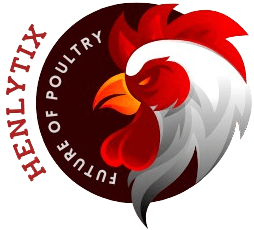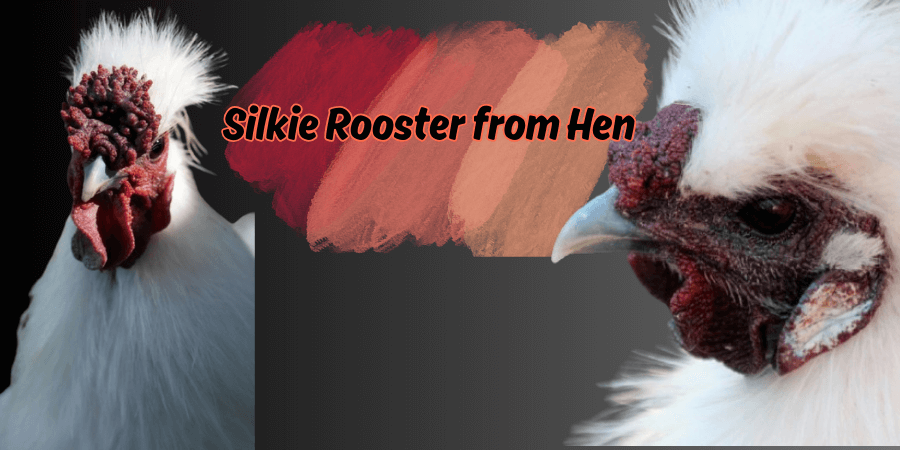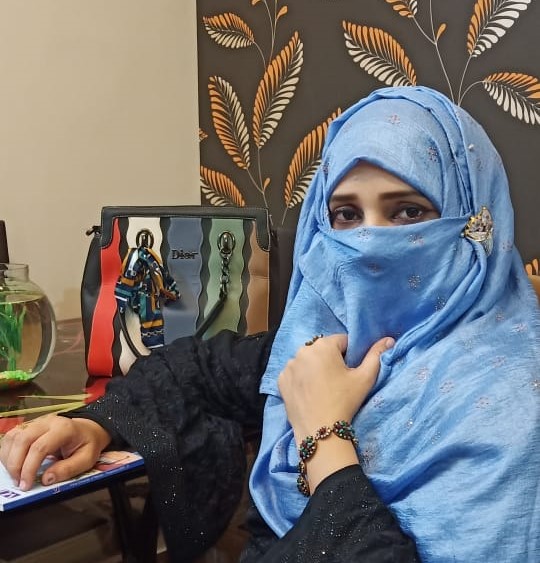When it comes to silkies, many owners face the challenge of sexing them, especially since it can be difficult to tell whether they are roosters or hens. This breed is known for its friendly, docile, and sociable nature, making them great pet chickens for families with children. However, knowing how to distinguish between the two can take some time, typically around 3 months.
The key lies in observing certain physical traits that develop as they grow. For instance, males often show larger comb and wattles, as well as a more prominent tail and more aggressive behavior compared to females.
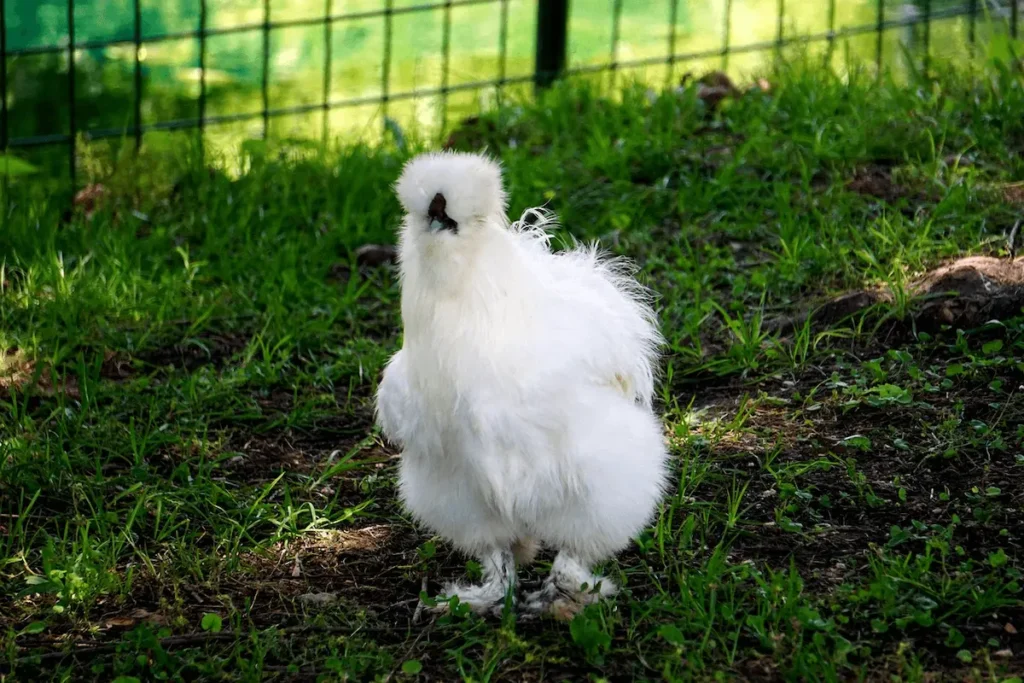
At about 6 weeks, subtle differences start to become visible, but it’s not until sexual maturity that the differences between males and females are more apparent. Roosters tend to have a more vibrant plumage and show off more vocalization, especially through crowing.
Hens, on the other hand, exhibit a calmer temperament and are less likely to crow. Socializing and careful observation of the comb development, feathering, and size can help you identify your silkie’s sex. Keeping these factors in mind will make gender identification much easier for both new and experienced breeders.
How to Tell a Silkie Rooster from Hen- Short Answer
To tell if a Silkie is a rooster or hen, wait until 10 weeks and look for key traits: roosters are larger, develop wattles and walnut-shaped combs earlier, grow spurs and long tail feathers, stand upright, and often crow—while hens stay smaller with V-shaped combs, fluffier tails, and relaxed posture.
How to Tell if a Silkie is a Rooster?
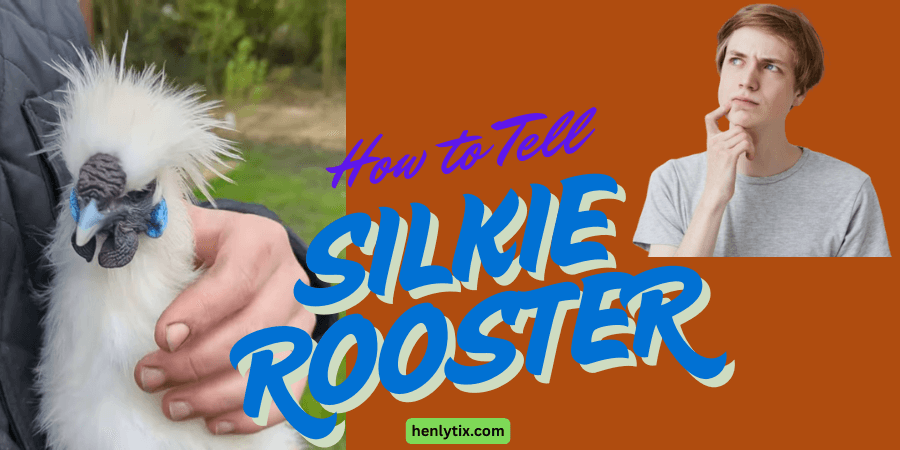
To determine if a Silkie is a rooster or a hen, start by waiting until they reach the age of 10 weeks. At this stage, a trained eye can spot several physical differences that help differentiate the two.
- Body Size: Roosters are larger and bulkier than hens, making them easier to identify as they grow.
- Wattles Development: Roosters develop wattles earlier than hens, which can be a helpful indicator.
- Comb Shape: The comb of a rooster is typically walnut-shaped and larger, while a hen’s comb is V-shaped and smaller.
- Spurs: One of the most reliable ways to distinguish a rooster from a hen is by checking for spurs, which only roosters have.
- Feathers: Roosters grow longer sickle feathers on their tails, which are often black or shiny blue, while hens have shorter, fluffier tails. Additionally, hens have more tidy and round crown feathers, whereas roosters have neater and more organized crown feathers.
- Posture: Roosters tend to stand more upright, whereas hens have a more relaxed posture.
- Crowing: If your Silkie starts to crow, it’s almost certainly a rooster. While some hens may make crow-like noises, this usually happens when they’re establishing dominance in the pecking order.
By focusing on these key features, such as size, wattles, comb shape, feathers, and posture, you can easily tell whether your Silkie is a rooster or a hen.
Silkie Rooster vs Hen
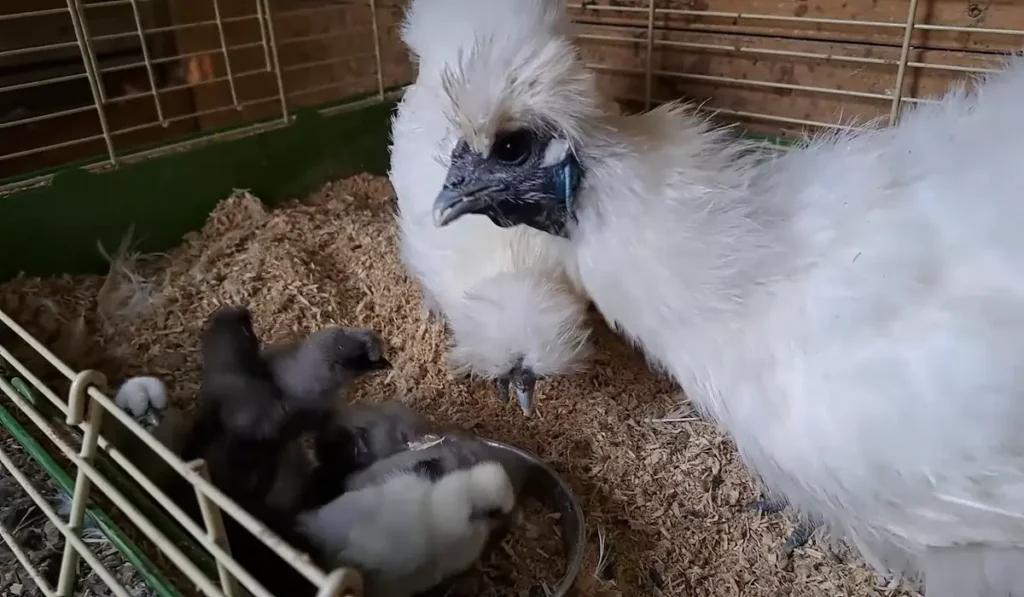
When distinguishing between a Silkie rooster and a hen, it’s important to focus on a few key characteristics. The rooster typically has sickle feathers on its tail, which grow in a ∩ shape and are distinctively longer. Its comb is often thin and extends in parallel lines, joining into a walnut shape, which is usually the same height as the beak.
Roosters also develop wattles earlier, while hens do not show this feature until around 3-4 months old. Additionally, the crest on a rooster tends to be more neat and round, with occasional exceptions.
In terms of size, Silkies are a smaller, miniature breed. A rooster weighs about 3-4 pounds (1.3-1.8 kg), while a hen is lighter, around 2 pounds (900 gr). The appearance of Silkies is very recognizable, and they are often kept by chicken keepers for their friendly personality and fluffy look.
Silkies come in both bearded and clean-faced varieties, with unique features like black skin, bones, five toes, and blue earlobes. Their distinct appearance makes them ideal for ornamental purposes and poultry shows, where they stand out from ordinary laying breeds.
| Key Attribute | Details |
| Lifespan | 7-10 years |
| Body Type | Compact body, short back, fluffy tail |
| Feathers | Soft, silky, and fluffy |
| Weight | 2.5-4 lbs |
| Hardiness | Tolerant to cold temperatures |
| Temperament | Gentle, friendly, calm |
| Beginner-friendly | Yes |
| Color | Wide range of colors, including black, white, and partridge |
If you’re looking for a unique and beautiful addition to your flock, the Barnevelder Chicken is an excellent choice.
Are Silkie Roosters Friendly?
Silkie chickens are among the friendliest chicken breeds in the world. They make excellent companions for kids and are loved as pets. Silkie roosters, or Silkie Roos, are typically much friendlier than other male chicken breeds, making them perfect for people who want a sweet and easy-going rooster.
These roosters are known for their individual temperament and personality, often being calm and gentle. While they do have the task of protecting the flock, their approach is much less assertive and aggressive compared to roosters like the vocal and confident Rhode Island Red.
The role of a Silkie rooster as a flock protector is important, but they carry it out with a calm and sweet demeanor. They make excellent leaders and will serve as the coop protector when needed, ensuring the hens and the entire flock are safe.
Just as Roosters Crow to signal their presence and authority, a Silkie rooster also communicates his role in the flock in subtle ways. However, if a Silkie rooster begins showing signs of aggressive behavior, it’s important for a chicken keeper to take action quickly. Using tools like pinless peepers can help control and calm any unwanted aggression.
Unraveling the Truth Behind Silkie Sexing Myths

There are many myths surrounding Silkie sexing, especially when it comes to determining whether a chick is a rooster or a hen. One common belief is that the back claw pointing upwards means it’s a female, and if it points down, it’s a male. However, this method isn’t always reliable. Some people believe longer beaks mean roosters and shorter beaks mean hens, but again, this can be misleading, as exceptions exist.
Another myth suggests that the shape of the egg can determine the chick’s sex. A narrow egg supposedly indicates a male, while a rounder egg suggests a female. While these ideas are popular, they are not scientifically proven.
Additionally, people often use methods like hovering a string with a small weight over the chick to predict its sex. In reality, these beliefs don’t change the biological fact of how Roosters Fertilize Eggs, which happens after mating and has nothing to do with such outward myths.
If the weight swings in a circular motion, it’s thought to be female, while a linear motion suggests a male. Roosters also tend to have spur lumps, which grow into spurs, while hens rarely develop them. It’s important to remember that many of these methods are based on old myths and not always accurate.
Unlock the secrets of Faverolle and enrich your chicken-keeping journey with expert knowledge.
Frequently Asked Questions
What is the difference between a Silkie rooster and a hen?
A Silkie rooster is generally larger and stands upright with a larger walnut-shaped comb and wattles. Hens are smaller and have V-shaped combs. Males develop distinct streamer or sickle feathers on their tail and saddle, while hens have a smaller, rounded crest and pillowy comb.
What does a Silkie rooster comb look like?
A Silkie rooster’s comb is larger and walnut-style, turning red as it gets older. In contrast, hens have a small, triangular shaped comb. If you notice this development, it’s definitely a rooster.
What is the rarest Silkie color?
The rarest Silkie color is Lavender, due to challenging genetics and difficulty in breeding healthy chicks with a purplish hue. Other less common colors are Paint, a white bird with black splashes, and Splash, a bluish-white with black splashes. Partridge is also harder to obtain compared to more common colors like white, black, or buff.
At what age do Silkie roosters crow?
Silkie roosters usually start showing their crowing ability between 3 to 6 months of age. However, some may begin with pathetic squawks or crackles as early as 6-8 weeks. The full crow, or mature crow, typically develops around 5 months of age.
In conclusion
Distinguishing between a Silkie rooster and a hen requires patience and careful observation of key physical traits as they mature. By focusing on comb shape, wattles development, size, feathers, and behaviors such as crowing, it becomes easier to identify whether your Silkie is a rooster or a hen.
Additionally, understanding the Silkie’s temperament and friendly nature can help in recognizing their differences, while also being mindful of common myths that may mislead you. Whether you’re a beginner or an experienced breeder, recognizing these signs will ensure that you can accurately tell your Silkie’s sex and enjoy the beauty of this unique breed.
Read more about: Quick Guide: How to Tell a Wyandotte Rooster from a Hen
Salmon Faverolle Chickens: The Adorable, Friendly Backyard Star!
